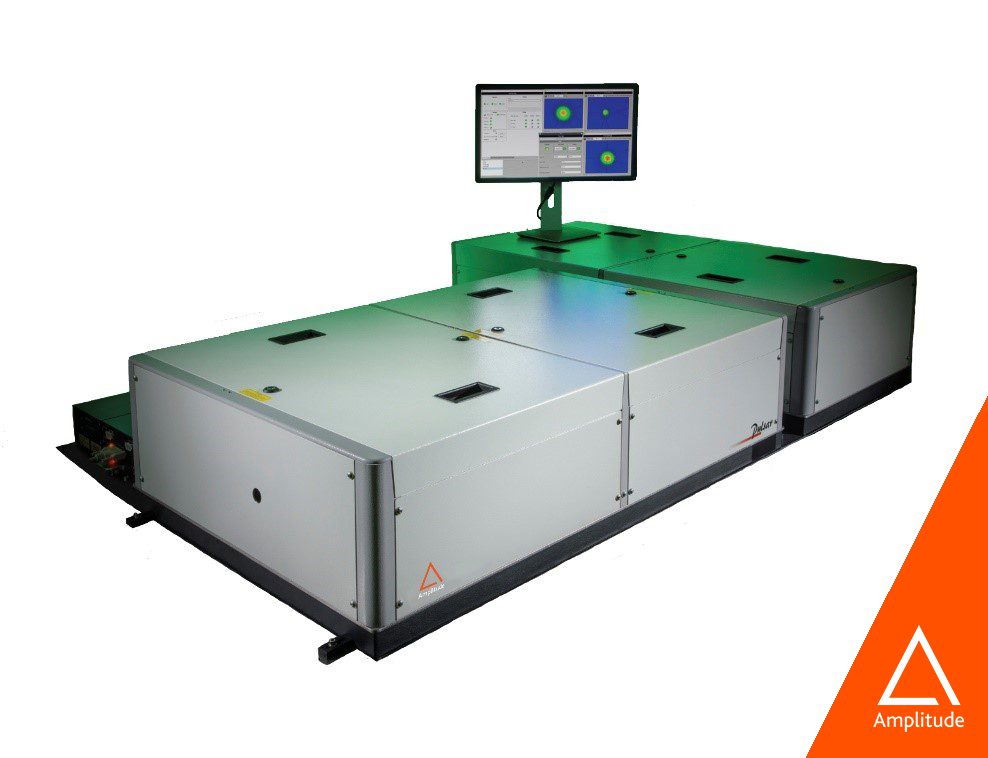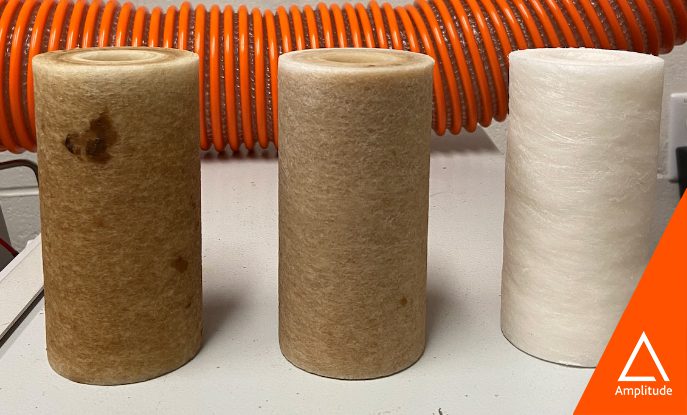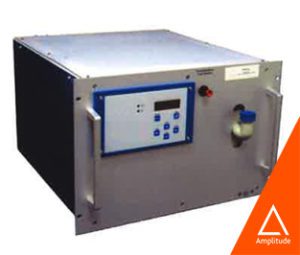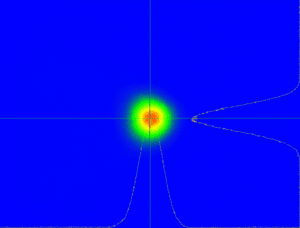Ti:Sapphire Laser Maintenance After Long Shutdown

Figure 1: ARCO ultrafast Ti:Sapphire laser from Amplitude
It is recommended to run your ultrafast Ti:Sapphire amplifier at least 30 minutes every week to ensure its proper operation. If the laser needs to be turned off for more than two weeks, we recommend preparing the laser to storage condition, following the manual or instructions from your service engineer. This usually requires a complete shutdown of the whole laser. All chillers need to be drained and dried. Then the laser should be stored under dry and cool conditions.
Before you turn on the system after a long period of shutdown, please do a full check-up of the laser by following the instruction of your service engineer. This usually includes the following parts.
1. Chillers

Figure 2: Particle filters with different level of cleanness
Most pump lasers for ultrafast amplifiers are water-cooled. Usually, the chillers for high power DPSS pump laser require high level of cleanness of the coolant, which is usually distilled water. After the chiller has been sitting still for long period of time, micro-organic matters might start to grow. These micro-organic matters will stick to the walls and joints of the inside of the chiller and prevent the laser to be cooled properly. If not treated properly, it might even lead to irreversible damage to the laser due to overheating. Therefore, we recommend doing deep cleaning on the chiller if it has been sitting still for long period of time. Please refer to your user manual for cleaning procedure. If the chiller has been contaminated badly, it might require multiple cleaning cycle. Cleaning with 3% H2O2 has been proven effective against micro-biotics. After proper cleaning, you should be able to drain clear water from the chiller. One way to judge the cleanness of the water is from the color of particle filters.
On the picture shown on the left, particle filters are (from left to right): badly contaminated, contaminated and new. It is often recommended to add Optishield to keep the chiller coolant water clean. After cleaning, please add some water and the Optishield to the chiller with the ratio indicated in the manual. For example, some high power DPSS laser require 5% Optishield in the chiller coolant water. Usually, we also recommend the following maintenance:
| Item | Name | Interval |
| 1 | Circulating laser coolant for 30 minutes | Once a week |
| 2 | Checking the coolant level | Once a month |
| 3 | Checking the humidity level | Once a month |
| 4 | Checking the return coolant strainer | Once a month |
| 5 | Changing the chiller particle filter | Every 3 months or 1500 hours (whichever comes first) |
| 6 | Changing the coolant | Every 3 months |
| 7 | Determining the optimized working temperature | Every 6 months |
Chillers for flashlamp pumped lasers also require cleaning. Most of them do no need Optishield in the coolant water.
There are usually other chillers in your laser amplifier other than the pump laser amplifier, e.g. chiller for Ti:Sapphire crystal, chiller for laser beam dump, etc. They usually do not require as high level of cleanness as the DPSS pump laser. It is recommended to check the cleanness and the level of the water regularly. O-rings are common part in a cooling loop. Long storage under dry condition can be detrimental to a lot of O-rings. When turning chillers on for the first time after a long shutdown, make sure to check all O-rings in the system and make sure they are sealing properly. You’ll need to replace the faulty O-ring if a leakage happens.
2. Optical components
Ultrafast Ti:Sapphire amplifiers should be operated under cleanroom conditions. The cleanness of opticals affects their performance and reliability. Dirty optics will cause downgraded performance or even damage. After a long shutdown, it is recommended to check all optics carefully for cleanness. You need to be especially careful with critical components such as mirrors for pump laser, Ti:Sapphire crystal, gratings, etc. If dust was found on the surface, try to blow it away carefully with clean dry nitrogen. Not all optical surface is cleanable with optical tissue. Please consult your service engineer before cleaning.
3. Pump lasers

Figure 3: Example of chiller for DPSS pump laser
You may start your pump lasers after confirming the proper operation of their chillers. Keep an eye on all the critical parameters of the pump laser including temperatures at different positions (controller, laser bench, crystals, etc.), humidity, conductivity. You may tune the water temperature if needed. Please follow the manual or contact your service engineer for details.
4. The ultrafast Ti:Sapphire amplifier

Figure 4: Beam profile and beam position recorded on CCM
You may turn on your ultrafast Ti:Sapphire amplifier following the start-up procedure once the optical components and pump lasers are confirmed to be working properly. It is recommended to measure the output power/energy at different positions of the laser and compare to values at installation. If your laser includes regenerative amplifier, make sure the pulse train from the regenerative amplifier is the same as before. Most ultrafast Ti:Sapphire amplifiers from Amplitude come with an advanced intelligence user control system called Control-Command Software (CCM). With the help of the CCM, you will be able to monitor the beam profile and position at different laser locations. By comparing the current beam profiles and beam positions to the ones during the last laser run, you can determine whether the laser is running properly now or if further optimization is required.
Article written by Kaikai Zhang Ph.D, Ultrafast Laser Systems Engineer at Amplitude, May 2020